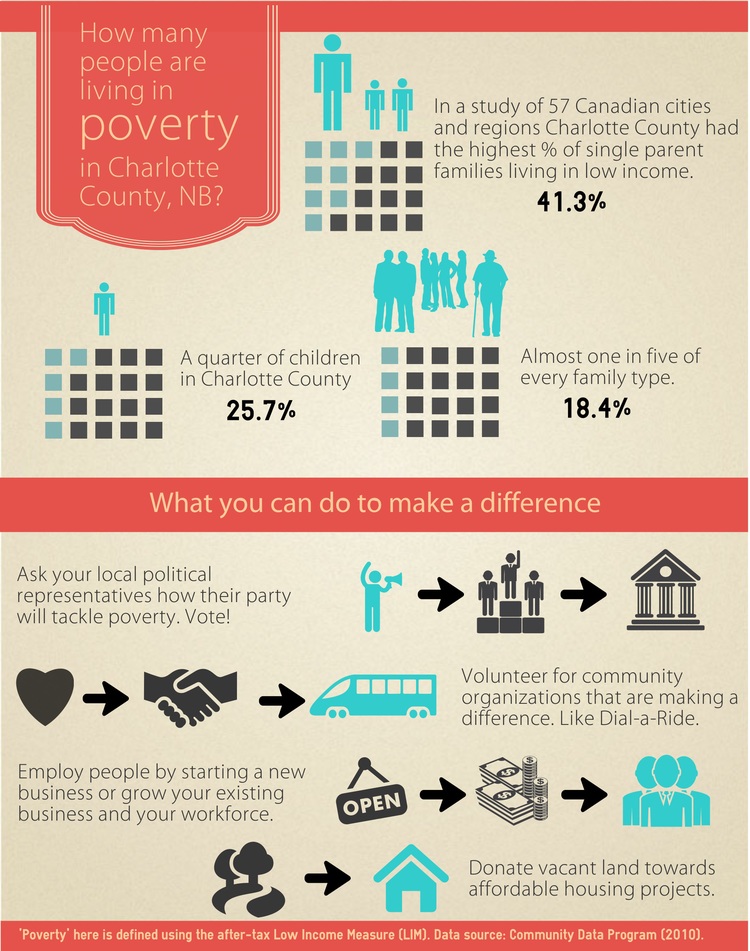It is a common misconception that homelessness is a problem faced only by single adults living in large cities. The reality is that individuals living in homelessness can be found throughout Canada, in both small and large cities, wherever poverty persists. The below infographic, published by Vibrant Communities Charlotte County, takes a look at the rate of poverty in Charlotte County, New Brunswick. Charlotte County consists of six municipalities, all of which have a population of less than 5,000 (as of 2011). Poverty, as used here, is defined using the after-tax low income measure (LIM). LIMs are the most frequently used measure of income internationally. In this context, LIM measures how many Charlotte County residents have an after-tax income lower than 50% of the adjusted median income for all Canadian families.
The infographic states that Charlotte County had the highest percentage of single parent families living in low income in a study of 57 Canadian cities and regions. 41.3% of single parent families were living in low income households. Women are more likely to be represented in these families. This can have an intergenerational impact in situations where single mothers are unable to adequately provide for their children’s needs. A 2009 YWCA report stated that “43% of children living in a low-income family live with a single, female parent. The median income for single moms is more than a third lower than for single dads.” In circumstances where these families are unable to afford rental costs, they may be forced to live on the streets.
The infographic also states that a quarter of children in Charlotte County live in poverty. This is not just a problem in Charlotte County, but nationally. Too many children in Canada live in poverty and children in Canada are more likely to live in poverty than the overall population. According to Campaign 2000's latest report card, 1,334,930 children (19%) are living in poverty in Canada. There are many barriers and care gaps that children living in poverty face compared to children living in a financially secure household. Children living in poverty are more likely to face barriers to education, have difficulty obtaining safe and healthy nutritious foods, and live in poor housing conditions. Allowing children to grow up in poverty, and failing to assist them in their goals and dreams for the future results in increases in social costs for the country.
There are steps that we can take to tackling poverty. This includes making it clear to our local provincial and federal members of parliament that there is strong support for the implementation of poverty reduction strategies. As stated in the infographic, we can also make a difference by supporting local community organizations that are making a difference on the ground. An example of such an organization based in Charlotte County is the Fundy Community Foundation, a locally run public foundation that builds and manages endowment funds to support charitable activities.


